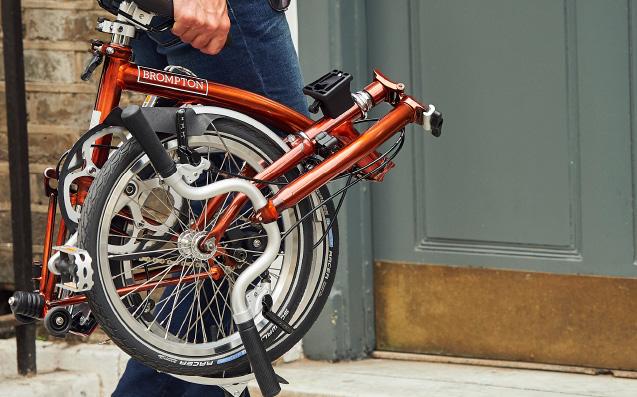[This post has been authored by Neha Mehta, a student at Kirit P. Mehta School of Law, NMIMS.]
Quoting Robert L. Peters, “Design creates culture. Culture shapes values. Values determine the future.” Designs are a way of expressing one’s thought and creativity. Protection of functional shapes is not a mere concern of patent law. If a design solely dictated by technical function were to be excluded from the ambit of protection under design laws and happened to find protection under the copyright law, then this would cause monopoly of technical solutions and hamper technological innovations.
In a recent judgement (delivered on June 11, 2020), the Court of Justice of the European Union (CJEU) in the case of SI & Brompton Bicycle Ltd. v. Chedech / Get2Get [Case C‑833/18], upheld that the functional design of a bicycle can be granted copyright protection so far as it is an original work which is an outcome of the author’s intellectual creation.
Background: The dispute between Brompton and Get2Get
Brompton Bicycle Ltd. is a UK based company founded by Mr. SI. Since 1987, the company has been marketing and selling the very famous and compact Brompton bicycle. Its popularity is derived from its unique design and structure. The bicycle is designed in such a manner that it has three distinct positions – folded, unfolded, and a stand-by position, that enables it to stay balanced on the ground. This feature of the Brompton bicycle was protected by a patent that has now expired.
Get2Get is a Korean company that produces and markets a bicycle called ‘Chedech’, which appears to be similar to the Brompton bicycle, having the same foldable characteristic feature and has the same three positions. It is owing to this fact that a case was filed in November 2017 by Brompton Bicycle Ltd. in the Companies Court, Liège, Belgium against Get2Get claiming copyright infringement. The Belgian Court stayed the proceedings and referred that matter to the CJEU to ascertain whether copyright protection under EU law (Directive 2001/29) as per Articles 2 to 5 extends to products whose shape, at least in part, is necessary to obtain a technical result. The CJEU had to determine the following issues imposed by the Belgian Court:
- “Whether EU law must be interpreted as excluding from copyright protection, works whose shape is necessary to achieve a technical result?”
- “In assessing whether a shape is necessary to achieve a technical result, should the following factors be considered:
(i) Existence of other possible shapes that would allow the same technical result to be achieved;
(ii) Effectiveness of the shape in achieving that technical result;
(iii) The intention of the alleged infringer to achieve that result; and
(iv) The existence of an earlier, now expired patent on the process for achieving the technical result sought”
Court’s Conclusion
The court concluded that “a subject matter satisfying the condition of originality may be eligible for copyright protection, even if its realization has been dictated by technical considerations.” It must, however, be “provided that its being so dictated has not prevented the author from reflecting his personality in that subject matter, as an expression of free and creative choices.” Further, where the shape of the product is solely dictated by its technical function, that product cannot be covered by copyright protection.
Therefore, in order to establish whether the product concerned falls within the scope of copyright protection, it is to be determined whether, through that choice of the shape of the product, its author has expressed his creative ability in an original manner by making free and creative choices and has designed the product in such a way that it reflects his personality.
Articles 2 to 5 of Directive 2001/29 protect authors against the unauthorised reproduction, communication to the public, and distribution of their works. At the very outset, the Court of Justice cited the case of Cofemel C‐683/17, to determine whether the bicycle was a piece of ‘work’. To ascertain whether the subject matter can be considered within the ambit of the term ‘work’, it is important that it should be an original work created by the author’s own intellectual creation and that it reflects the expression of that creation. Both these conditions are necessary to fulfil the requirement of the concept of “work”. The CJEU further elaborated that a product would not be considered as a work where the realisation of the subject matter is absolutely dictated by technical considerations and leaves no room for creative freedom. It was, therefore, held that the product does not enjoy copyright protection. The Court further stated that the subject matter needs to be identifiable with sufficient precision and objectivity.
Referring to Article 2 of the WIPO Copyright Treaty, the Court established that copyright protection does not extend to ideas. The Court cited its ruling in SAS Institute and BSA to state that where the expression of components of a subject matter is dictated by their technical function, there exists a limitation to implement various ideas; therefore, making the idea and the expression inseparable. The CJEU noted that even though the shape/design of the bicycle appears to be dictated by its technical function, the originality still has to be determined by national courts.
The nexus between shape and technical function
The crux of the argument, in this case, revolved around evaluating whether a shape is necessary to achieve a technical result. The CJEU had to take into account four factors:
Firstly, the Court emphasized that even if there exist multiple shapes resulting in the exact same technical outcome, such existence is not a decisive factor to ascertain whether the design or the shape of the product is solely dictated by its technical function or reflects the author’s creative ability to express. Regarding the effectiveness of a shape to attain technical results, the Court emphasised that “it should be taken into account only in so far as those factors make it possible to reveal what was taken into consideration in choosing the shape of the product concerned.” The Court also noted that the intentions of the alleged infringer are irrelevant while considering the originality of the shape of the product. Lastly, the already existing expired patent is considered relevant to the extent that it guides and assists the judge in assessing the reason as to why the creator chose a specific shape.
Analysis
The CJEU’s approach in the judgment is quite similar to cases such as Cofemel and Lego Brick. The CJEU followed the decision stated in the previous case of Cofemel and laid out the specifics in the current ruling. The Court precisely applied the principles of copyright by citing the ruling in the SAS Institute and BSA cases, which emphasised the creative freedom of expression, as well as the originality criteria, thereby providing a solid backing to the present case at hand. However, the originality criterion varies from case to case. In Painer (Case C – 145/10), the term originality is defined as the way the author expresses his/her personality through the work by making free and creative choices.
The Advocate General, in his opinion in the Brompton Bicycle Ltd. case, had specifically indicated to take into consideration the element of the creator’s intention. However, the Court was silent on this issue and even the national court failed to address the same. The CJEU repudiated the proposition laid down by the Advocate General to the point that it is necessary to note the intention of the creator/author rather than taking into account the intention of the alleged infringer. Apart from this, the Court failed to provide a complete list of factors like in the case of Doceram. Therefore, it can be opined that the Court does not intend to limit the factors by providing an exhaustive list. The CJEU’s decision provides flexibility to national courts in determining whether or not the design was the outcome of free choices but limited by reaching regular standards of functionality.
In practice, the referral question to the CJEU is significant as it deals with the aspect of overlapping rights, i.e., the protection of the design (patent protection) and the protection of the copyright. A patent is protected only for 20 years, while copyrighted work remains protected for the author’s lifetime and for 70 more years after his/her death. That said, the present judgment does not pay heed to the dangers of cumulation of rights despite the Advocate General delving into it in his opinion with regards to the Cofemel case.
Conclusion
The judgment is beneficial to designers/manufactures as original industrial designs may now receive long term copyright protection. With regard to the overlapping of rights, i.e., the protection of the design, and the protection of the copyright, it is for courts to carefully strike a balance to ensure that copyright is not solely used as a means to acquire long term protection and, thus, undermining the protection of other IP rights which exist over a shorter period. The judgment broadens the spectrum for designers to take legal recourse under copyright law upon expiry of their patent protection.



